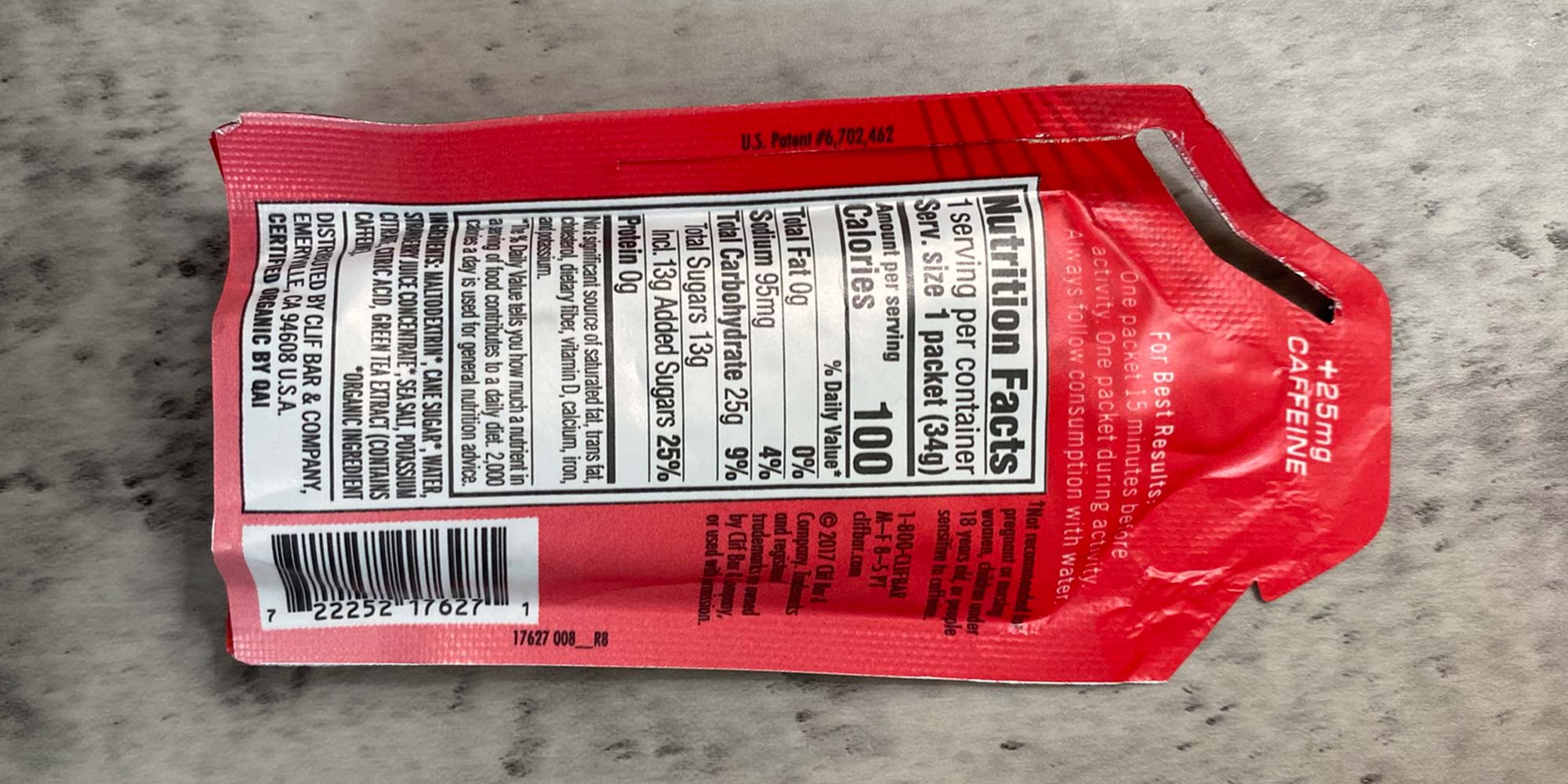Fueling is when a runner consumes food or drinks during their run to maintain energy levels. Fueling properly is one of the easiest and most effective ways to improve. Fueling is not to be confused with carb loading, which is eating carbs for days before a long run.
Food Options:
- Gels are the most common choice. They’re basically jelly in a small container that a runner squirts into their mouth. They’re usually taken with water so they can be swallowed easier.
- Some runners prefer to use solid food like granola bars or bananas. They’re slightly harder to eat while running than gels are because you have to chew them.
- Another option is to use a sports drink, but liquid is harder to carry.
Why I Prefer Gels
- Easy to carry in pockets
- Fast and easy to consume
- They make ones with caffeine in them, which I prefer.
- If I buy granola bars I tend to eat them at home. Gels are a food that I will only eat while running.
General Tips
- Practice fueling on all of your training runs. Figure out how much to eat and how often. Fuel just like you would in a race.
- Generally speaking, I think most runners don’t fuel enough, especially on training runs.
- Water is fuel in a way too. Being dehydrated can have a massive effect on performance.
- I think it’s best to use your own fuel during a race. Most races provide free fuel, but it’s best to stick with what you’re used to.
How Much to Eat During a Run
- Fueling is only required for runs over 75 minutes. But that doesn’t mean that you should wait until 75 minutes have passed to start fueling on a long run.
- The general guideline is to eat 30 to 60 grams of carbs per hour of running. That can vary based on weight, the terrain, how much was eaten before the run, etc.
- 1 gel shot (1.2 ounce) = 25 grams of carbs
- 1 banana = 25 grams of carbs
- 1 granola or fruit bar = 25 grams of carbs
- 20 ounce sports drink (non-diet) = 36 grams of carbs
- I keep it simple and eat one gel (25g of carbs) every 45 minutes. I’m 6’4” 210 lbs. That’s not a hard rule though, if I’m feeling sluggish towards the end of a long run I might eat a gel every 30 minutes.
- I’m going to repeat myself – practice fueling during your training runs! You probably only have one run per week that requires fueling anyways, so may as well perform better on the run and figure out a method that works best for you.



